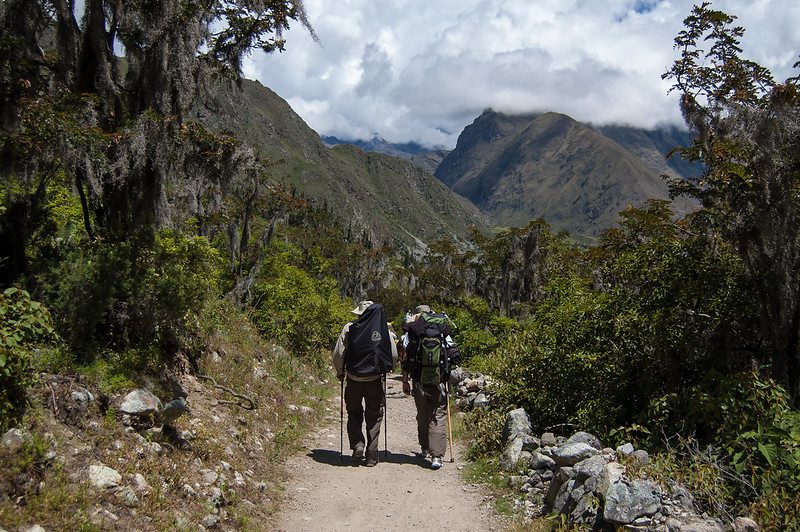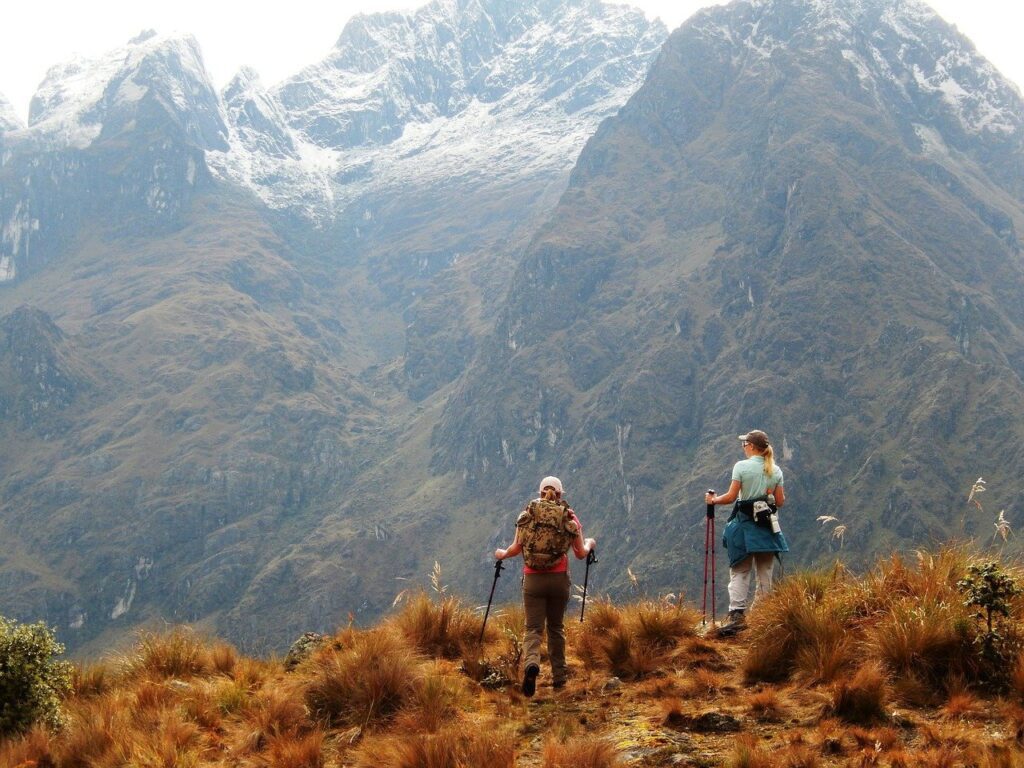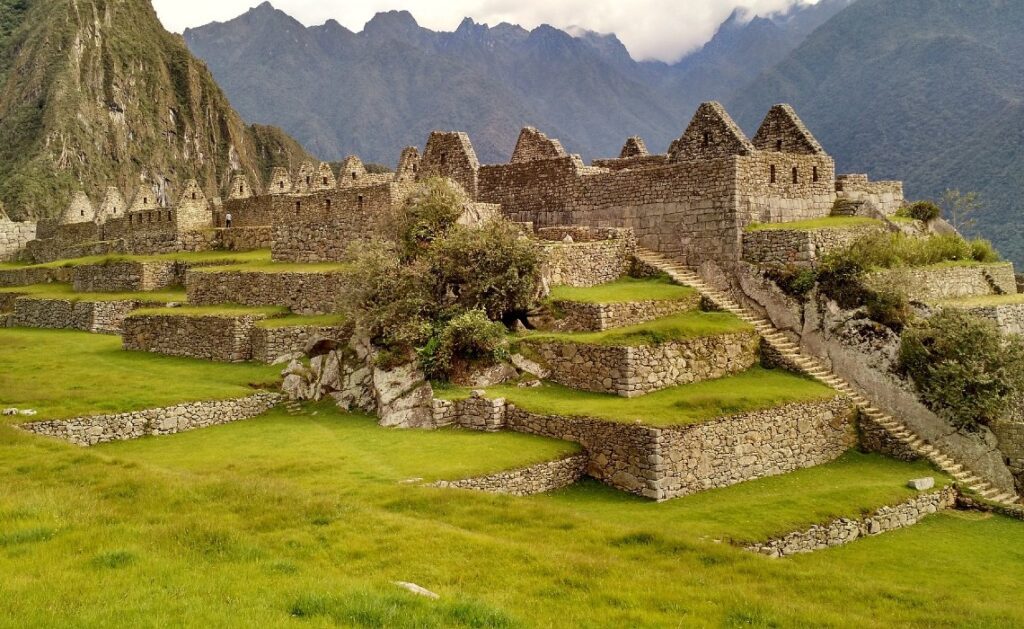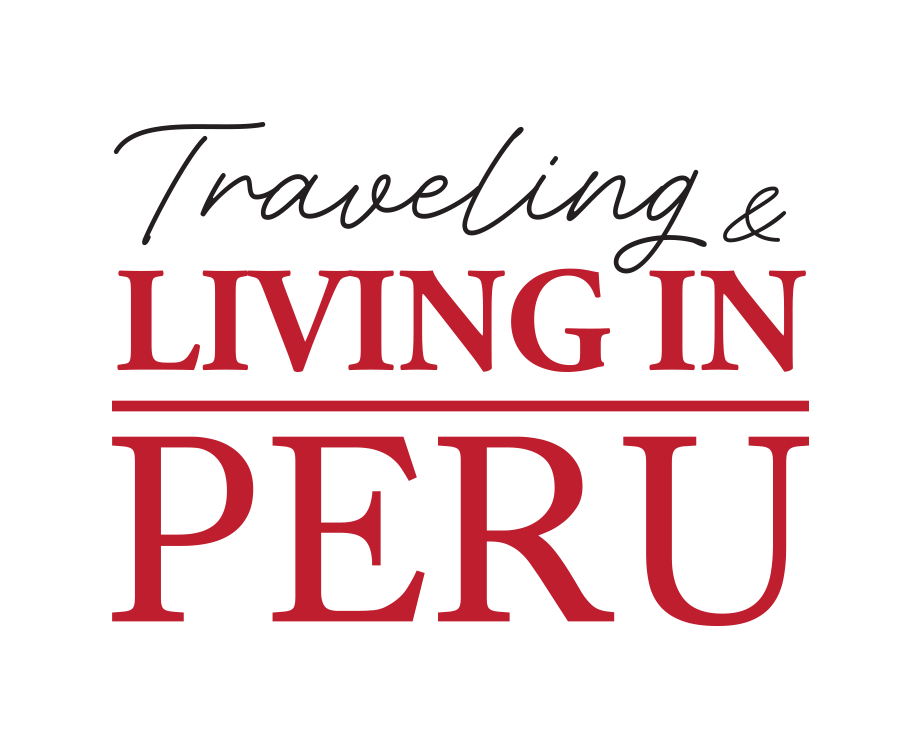On the Inca Trail you will follow ancient roads through the unique geography of Cusco while exploring well-preserved ruins. It’s an experience like few others in the world and this is what you can expect.
The Inca Trail leading to Machu Picchu has been named one of the best trails in the world by numerous publications.
Attracting thousands of visitors each year, it is a hike that you will not want to miss if connecting with nature and walking in the footsteps of a centuries-old civilization is on your bucket list.
Contact us at yourfriends@livinginperu.com to check availability of dates and rates! Dive into the the day-by-day along the Inca Trail below:
Overview of the Inca Trail
Trekkers have three challenging days of climbing and descending steep stone stairways and unpaved tracks between 3,000 and 4,200 meters.
Nevertheless, for many it is worth it, especially considering the Trail’s rich history and sightseeing along the way.
The history
The Inca Trail is part of an enormous network of roads amounting to approximately 50,000 kilometers, which once joined the remotest parts of the continent to the city of Cusco and was used to govern the empire.
Information, armies, and workmen could be moved quickly around this network. The central route is known as Qhapaq Ñan.
Sites on the Inca Trail
Along the route are numerous ruined buildings – still in an excellent state of preservation – that were used for different purposes during the Inca Empire.
Many are small settlements hundreds of years old, located in hard-to-reach places on hillsides, hilltops and cliffs, which suddenly appear when the enshrouding mist clears.
The stone-paved road, complete with irregular stairways, connects them all perfectly through variations in altitude and difficult terrain.
Starting point
The road starts in the Urubamba Valley, 82 kilometers along the Quillabamba-Cusco railway line, at a place called Piscacucho.
From there it runs along the left bank of the River Kusichaca as far as the Llaqtapata ruins, which is thought to have been a sort of resting place for groups heading to Machu Picchu.
The Vilcanota Mountains rise impressively, and the curve of the valley reminds us that thousands of years ago a glacier passed this way.
The first campsite is at the village of Huayllabamba, where walkers drink hot tea to prepare them for the chill of the night.
Day 1: Getting started on the Inca Trail

It is 5 o’clock in the morning before dawn, and it is very cold.
The porters – hardy men who hail mainly from the Sacred Valley – call out “hot water!” to wake up the walkers, depositing a jug of water outside each tent. They then light their lamps and prepare to strike camp before continuing to the citadel.
The cook is already making breakfast, which consists of hot drinks, fruit, oats, bread and cheese. A hearty breakfast is necessary before facing this long and complicated route.
Mist covers the high jungle hilltops of Wiñay Wayna, a complex of ruins on the Inca Trail and the last stop on the great trek to the citadel of Machu Picchu.
The walk of approximately 40 kilometers – depending on the starting point – begins with a descent down stone steps lasting three hours.
You start to warm up after only a few yards. The sky starts to turn blue, and the mist begins to dissipate. Machu Picchu is not far away.
Day 2: The climb to Warmihuañusca

The second day starts very early.
In contrast to the first day, the trail now leads up a long, steep stone stairway through a cloud forest inhabited by hummingbirds, other birds and spectacled bears, which are difficult to spot but can appear when you least expect them.
“How much further?” is a common plea from hyperventilating walkers. “Not long now,” say the guides, whose sense of distance is certainly not like ours.
The climb culminates at the Warmihuañusca pass, 4,200 meters above sea level, where your lungs seem smaller and your legs weaker.
Sparse vegetation is evidence of a lack of oxygen. Little grows except ichu, clumps of coarse grass that are an essential part of the diet of llamas and alpacas.
When descending, the land becomes greener. Queñual woods (Polylepis) and flowers appear, together with hummingbirds. Also, as you approach the high jungle, the scent of herbs fills the air.
Day 3: Try to keep up with the porters during another climb

The trail is not easy. You have to be in good physical condition or have great strength of will.
The third day involves another climb as far as Runkuraqay pass – at 3,800 m.a.s.l. – after a visit to the ruins of the same name.
And even if you leave first, the porters soon catch up. While you are pacing yourself, breathing in time with each step, the guides over-take you easily. Instead of trainers, they wear rubber sandals called ojotas.
Born and raised in the Andes around Cusco, they are adapted to the altitude and difficult trails of the zone. They carry the tents; rucksacks with food; the gas bottle; and the cooker, while you carry your day sack.
Getting to know the guides
The porters are the real heroes of the trail and companions with whom you develop a close relationship.
The majority come from highland communities in Urubamba such as Huilloc, Soqma, Misminay or Pallta, where Andean traditions are still maintained.
Their mother tongue is Quechua. The colors of their clothes distinguish them from the people of other places, and their main occupations are farming and weaving of elaborate fabrics.
The men can work as porters on the Inca Trail, and over the years, they have established certain rules: The minimum tariff is 40 soles a day plus tips from travelers in the group, and the law says that they can carry up to 20 kilos.
Wiñay Wayna, the last stop before Machu Picchu
The porters cover the second stage quickly because they have to get to Wiñay Wayna before the walkers to set up the campsite.
On the way, the visitors have the opportunity to explore places such as Sayacmarca and Phuyupatamarca, which is arguably the best-preserved site on the route and includes stretches of stone-paved road beautifully built into the mountainside and a tunnel through the living rock.
Finally, after descending a stone stairway, you arrive at Wiñay Wayna, a settlement that contains dozens of perfectly designed terraces located at 2,650 meters.
The camps are set up on a large flat area adjacent to Inca terraced fields, and the excitement of being close to one of the great marvels of the world is shared by everyone. The sun sets behind the mountains, and Wiñay Wayna is enveloped in the darkness.
Lanterns light up tents, and the travelers enjoy a final meal. The stars shine in the night sky. It is 8 o’clock in the evening and time to get some sleep.
Day 4: Reach the final stop, Machu Picchu

Today, the end of the trek is at hand. You wake up early to dress, prepare your rucksack and have breakfast.
Then, the porters arrive one by one. It is an emotional moment as it is time to get started. Machu Picchu is not far away.
The reason for the early start is to see the citadel at dawn when it is still partially covered by mist, and you can experience the mysticism of Andean culture.
Without realizing it, you descend toward Intipunku (Gate of the Sun), the entrance to the world’s best-known Inca citadel: Machu Picchu. And so ends the last leg of the Inca Trail.
Cover photo: AmaraPhotos.com
This article has been revised and updated from its original publication on November 2, 2018.


